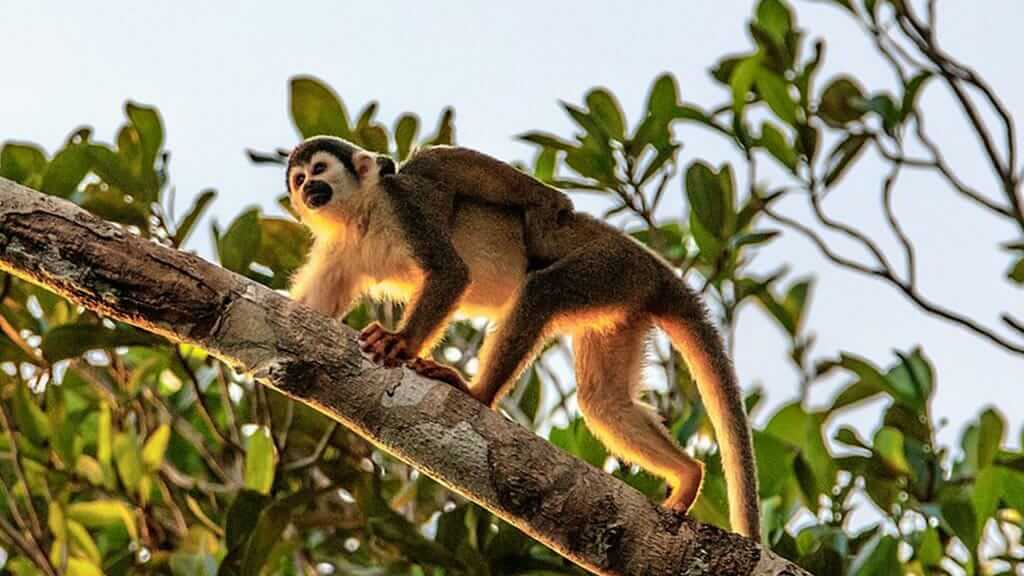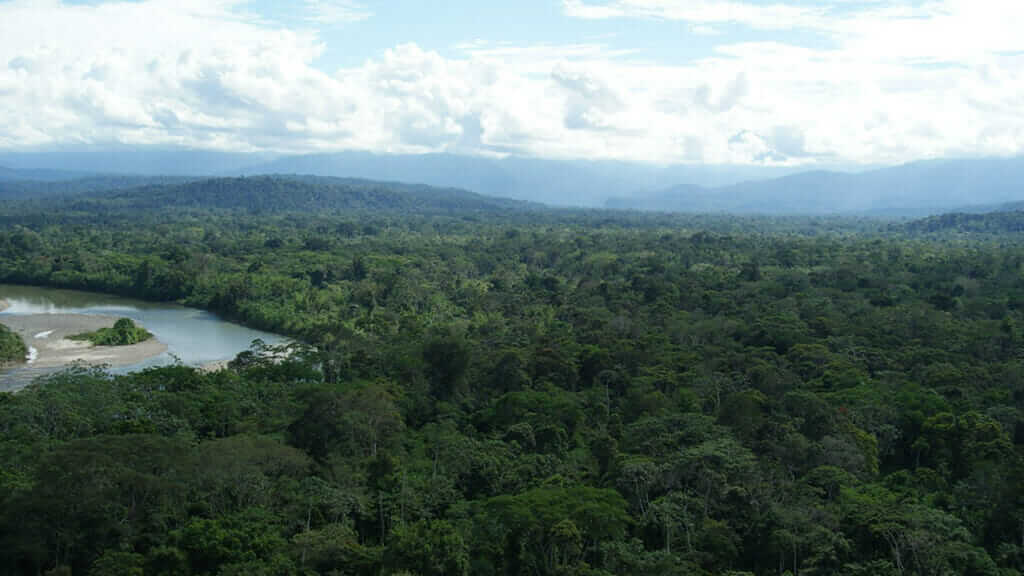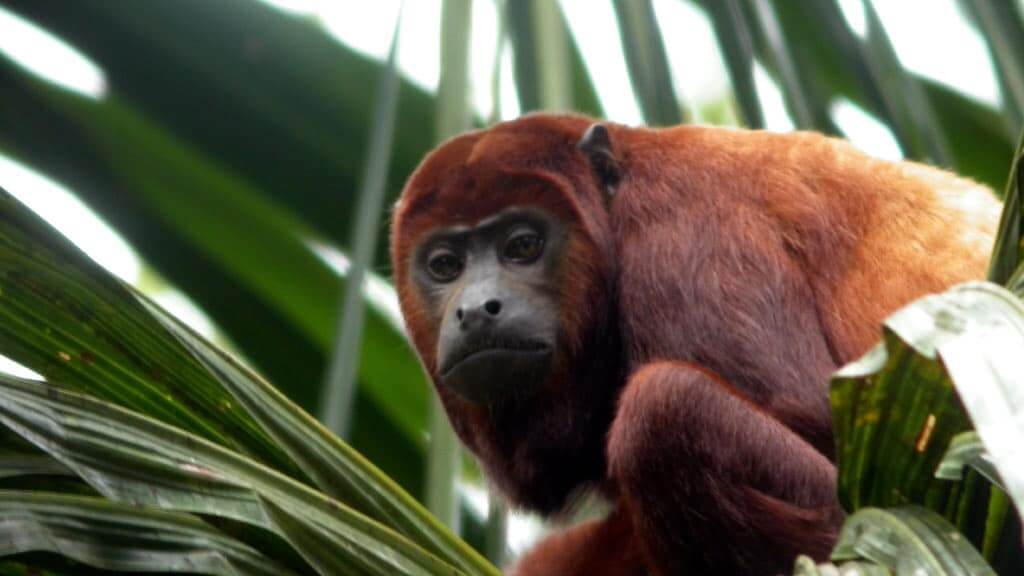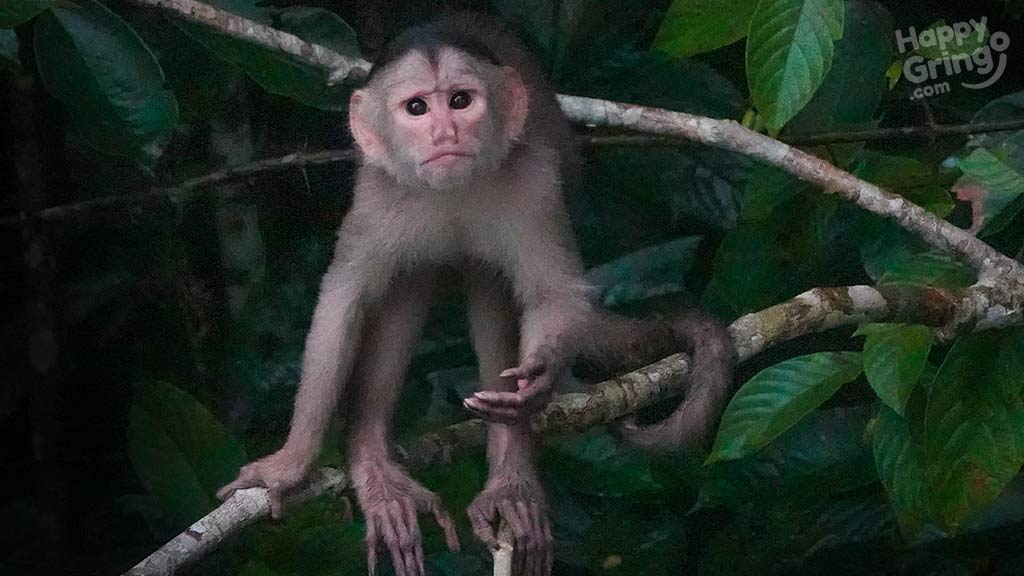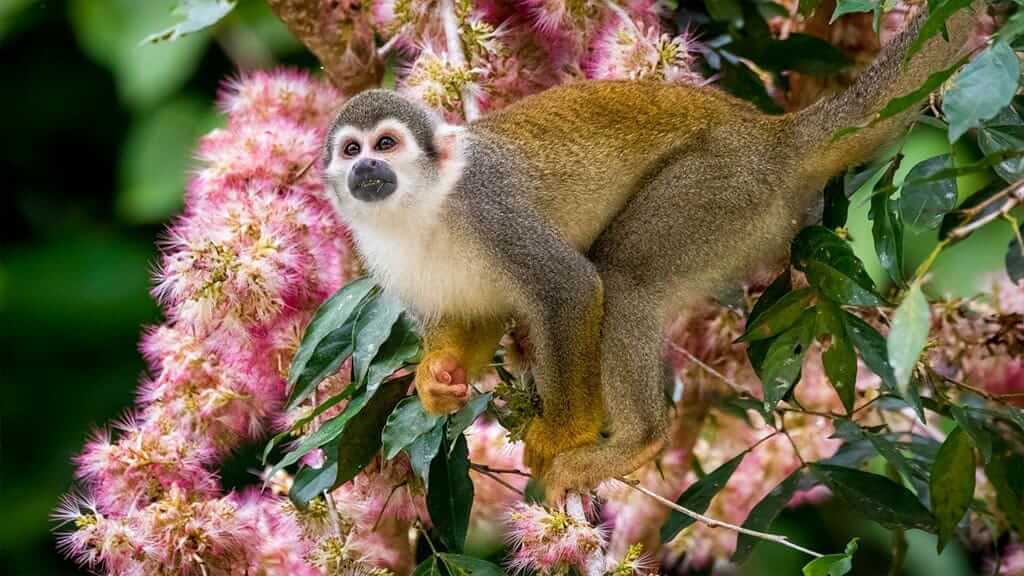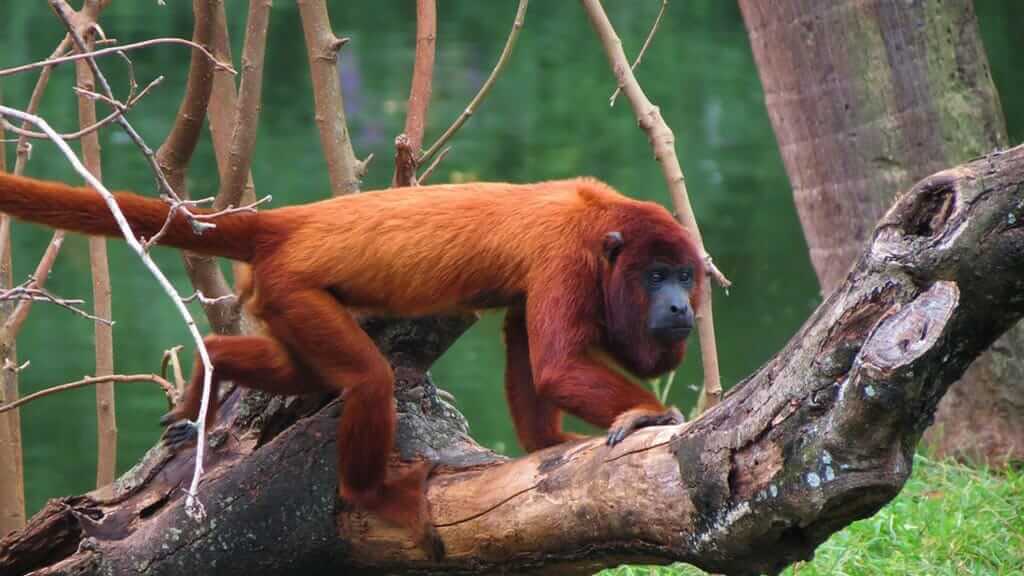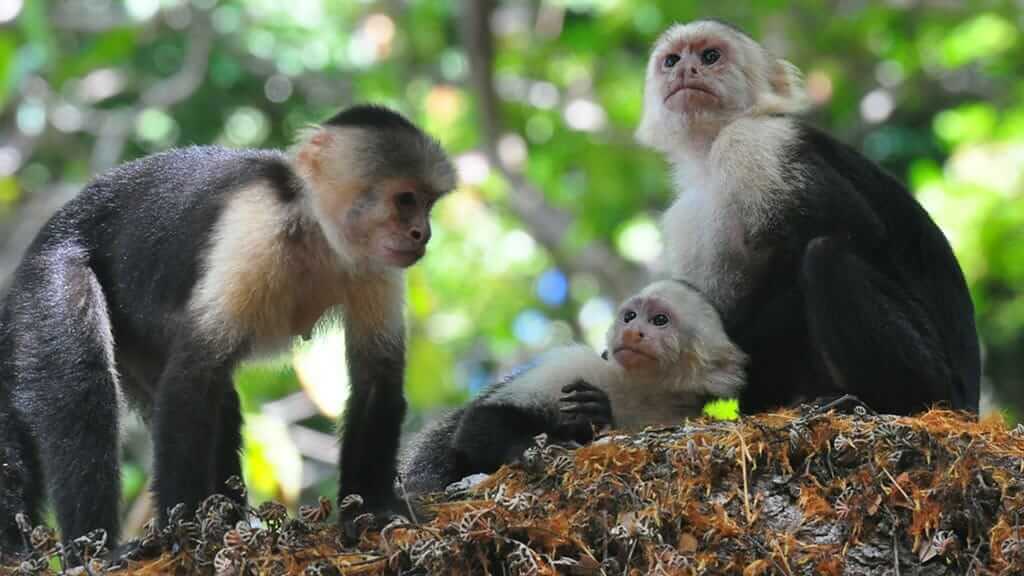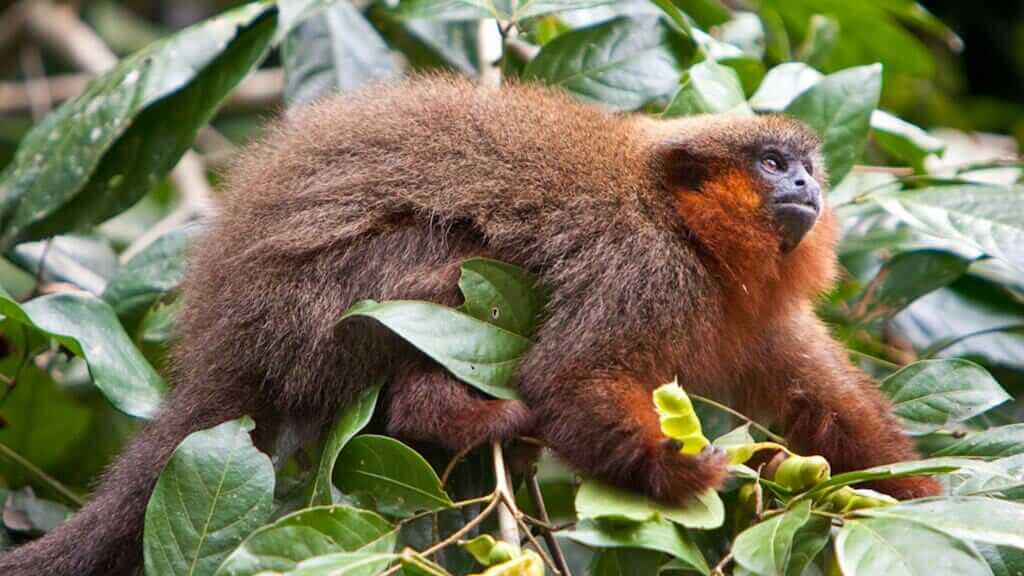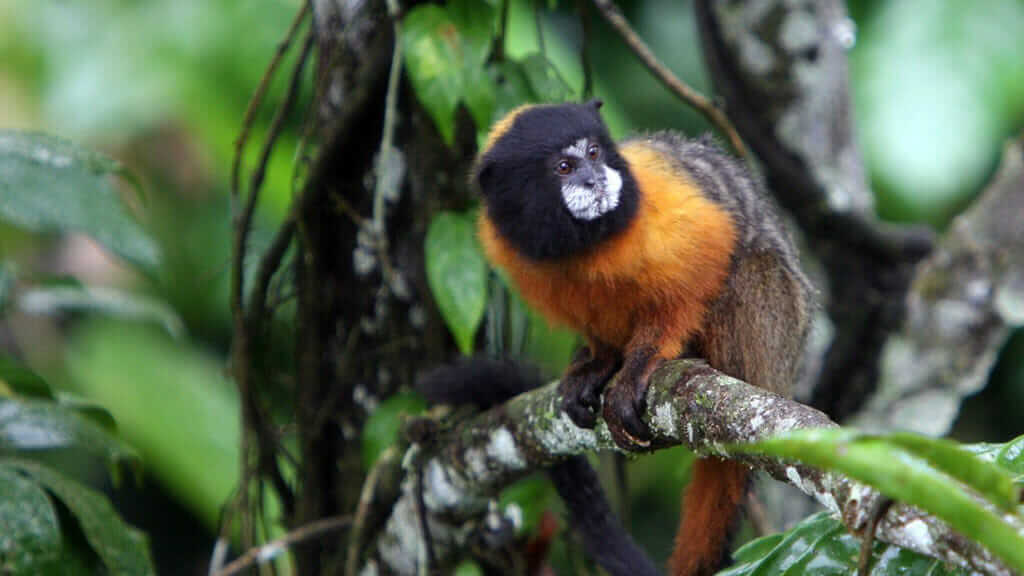Ecuadorian Monkeys
The small nation of Ecuador is one of the very best places to see wild monkeys on the planet. In the Amazon rainforest alone, visitors can spot an incredible 17 different species of Ecuadorian monkey. That’s not all, Ecuador also boasts some of the world’s more unusual monkey stories. From the world’s tiniest monkey, small enough to fit in your pocket, to the famous monkey who won a high court ruling. Ecuador’s Amazon is THE place to come for some serious monkey business!
Keep reading to learn more about Ecuador’s different rainforest monkey species, plus where are the top spots for visitors to find them.
Where do monkeys live in Ecuador?
Monkeys prefer low altitudes and dense forest, so the places to find them in Ecuador are in lowland Amazon rainforest, and in pockets of temperate and deciduous forest along the Ecuador's coast.
There are no monkey species to be found in the high Andes, or at the Galapagos Islands.
How many species of monkeys are there in Ecuador?
Ecuador is home to an impressive 20 primate species, of which 17 live in the rainforest to the east of the Andes, in the Amazon basin. The others are coastal Ecuadorian monkey species, inhabiting what remains of the coastal forests.
Where to see Ecuador monkeys in the rainforest?
Yasuni National Park
Recognised by scientists as the most biologically diverse place on the planet, Yasuni National Park should naturally be top of the list for monkey spotting. If you want to see Ecuadorian monkeys in the wild, in their natural habitat, then Yasuni is THE place to come!
The park offers two comfortable rainforest lodge choices – Napo Wildlife Center (NWC) & Napo Cultural Center (NCC). Both are operated by the Añangu Kichwa community, so all proceeds go straight back to rural Amazon development.
This author has had the good fortune to visit these deep jungle lodges on 2 occasions. My monkey count clocked in at 7 species each time, which is a pretty good haul over 4 days. The canopy tower and canoe rides take guests close to the action, and with luck monkeys can even be seen without leaving the grounds of the lodge. At NWC, for example, an unforgettable afternoon was spent watching Capuchin and Red-crowned Titi monkeys from the comfort our cabin balcony.
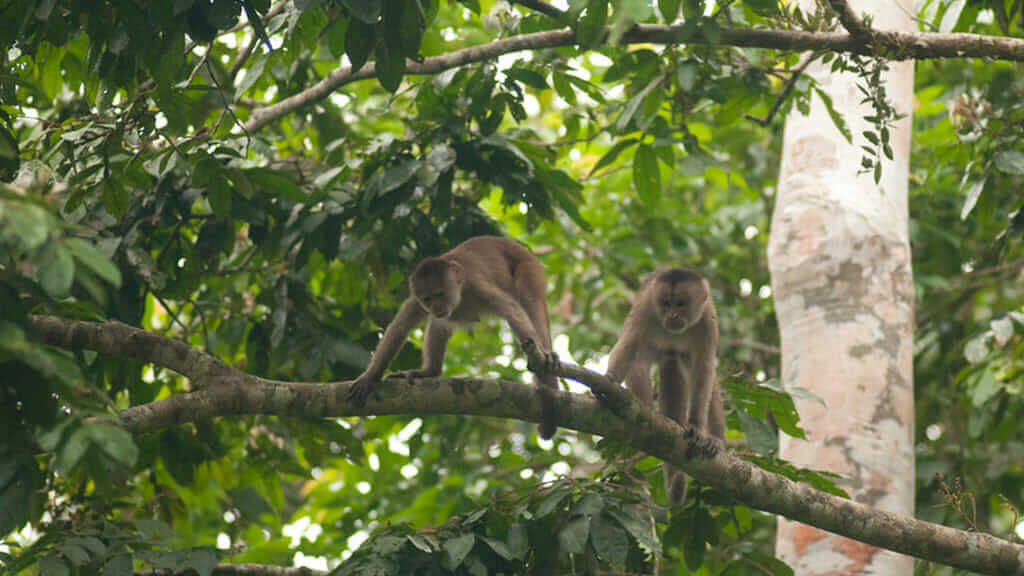
Yasuní is recognised as an important UNESCO biosphere reserve, and also hits the 2022 NATGEO list of top places to visit in the world … so, it’s hardly a surprise the monkeys love it here!
A different experience altogether, kayaking is another good choice to spot Amazon wildlife. Monkeys just love to hang out in trees close to rivers. Kayakers also have the advantage of paddeling silently. So, it’s easy to get close to the action without frightening monkeys away.
Happy Gringo’s 5 day Wuaorani Kayak Adventure tour, heads into Yasuni, as well as camping in a local indigenous community. This trip is recommended for intrepid explorers who enjoy getting off of the beaten path.
Puyo – Rainforest Monkey Sanctuary
Opening hours: 9am–5pm midweek, 10am–7pm weekends & holidays. Entrance Fee: Adults $4, Children (5 to 11 years) $2.
For those short on time, consider instead a visit to Puyo monkey sanctuary (Paseo de los monos). Just 60km east of popular resort town Baños, Puyo represents the start of the descent from Andes to Amazon.
While the truly wild monkeys of this region have long since been hunted out, this foundation is an important resource for monkey protection. The Swiss-Ecuadorian non-profit organization was created in 2005, serving as a rescue center for animals that have been mistreated in captivity, or found injured in the wild.
Here visitors can learn more about monkey species and snap great photos, safe in the knowledge that a good cause is being supported. It’s also possible to volunteer for a more in depth monkey experience. The minimum volunteer stay is for 1 week. Contact http://www.losmonos.org/volunteering/ if interested.
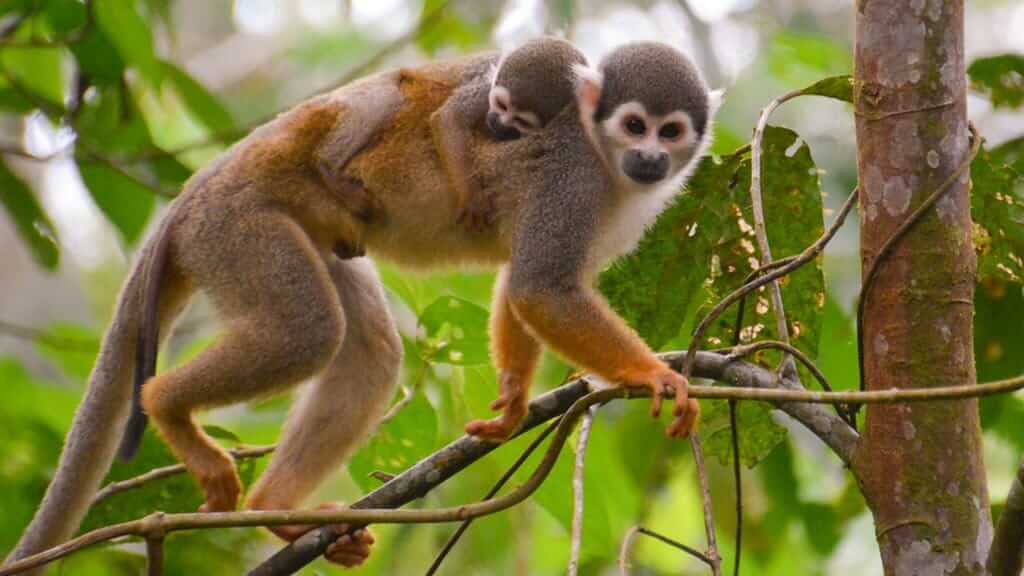
Mishualli – Ecuador’s famous monkey town
Another easy option to see semi-wild monkeys in Ecuador without much effort, is at Mishualli. This small town is famous for the cheeky monkeys that wander the nearby beach, and hang out in the park at the center of town.
Local tourists and foreign visitors alike enjoy the comotion caused by the Mishualli monkeys. But, one word of warning, the monkeys here have lost their fear of humans, and are rather mischievous. Or, to put it another way, they love monkeying around. They are known for snatching anything they can get their hands on, from sunglasses to cellphones, so keep you belongings guarded, and car windows closed.
Ecuadorian monkey species found in the Amazon Rainforest
So, without further ado, let’s meet the rainforest monkeys of Ecuador. For the sake of simplicity, we’ll group them into 10 broad species groups, while also detailing the sub-species. This way we cover all 17 species of Ecuadorian monkeys found in the Amazon rainforest.
1. Squirrel Monkey
Ecuadorian Squirrel monkey (Saimiri cassiquiarensis)
Also known as clown money (mono payaso), or soldier monkey (mono soldado, the Squirrel monkey is one of the more common species to be spotted in Ecuador’s amazon region.
Squirrel monkeys are small primates, measuring just 25-32cm in body size. They are easily recognised for their disintictive cute, white face with golden arms, light brown body, and black tipped tail.
These rainforest monkeys like to roam, spending most of the day moving around in search of food. They live in large groups, with sometimes as many as 150 individuals. So, if you do cross paths with one, your luck is in as you’ll usually be able to observe a large monkey troop all in one go.
2. Red Howler Monkey
Colombian Red Howler monkey (Alouatta Seniculus)
Howler monkeys are usually heard before they are seen. As the name suggests, howler monkeys are noisy fellas! Their territorial calls can be heard from 1-3 miles away, even in deep forest.
Why do they howl? To warn other howler monkeys away from the trees that they feed on, and to sound the alarm when danger threatens. Their deep, unusual howl is possible thanks to an enlarged hyoid bone in their throat that gives resonance to the calls.
These monkeys are also known as snoring monkey (mono roncador) or weeping monkey (mono llorón). They measure from 45-70cm (without tail), and are covered from head to toe in striking red fur. Ecuador howler monkey groups tend to be small, from 3 to 9 individuals, led by a dominant alpha male.
Their diet consists mainly of leaves, but they also dine on nuts, small animals, fruits, seeds, and flowers for nutrients and sugar.
Howler monkeys are a popular sighting for tourists, but perhaps this is not a species one would like too close to a lodge cabin. Their deafening morning chorus of howls usually begins at dawn, for an early morning wake-up call, whether desired or not.
3. Capuchin Monkey
Two species: Large-headed Capuchin (Cebus Macrocephalus) & White-fronted Capuchin (Cebus Yaracus)
Another common Ecuadorian monkey sighting is the cheeky, little capuchin. Named after their “caps” of hair, which resemble the cowls of Capuchin monks, capuchin monkeys are small (35-50cm body, without tail), with light brown coloring and tiny, pink, almost human-like hands.
Ecuadorian Capuchin monkeys live in multi-male, multi-female social groups of between 5 and 20 individuals. They are highly intelligent creatures, capable of using any available tool (twigs, branches, stones) to open food such as shells, nuts and hard seeds.
Using their prehensile tail, capuchin monkeys demonstrate impressive agility to leap from tree to tree. Tourists are often surprised by the daring raids launched on lodge fruit orchards to pinch juicy fruit.
4. Spider Monkey
White-bellied Spider monkey (Ateles Belzebuth)
Spider Monkeys are characterized by long, rangy limbs and a strong prehensile tail, perfect for rainforest agility and maneuverability. They are the largest of the new world monkey species, and research suggests they may also be the most intelligent.

In Ecuador, the white-bellied spider monkey plays an important function in the forest. They are long-distance seed dispersal agents for many fruit-bearing species. Their unusual foraging behavior makes them perfect for this role. Living in family groups of up to thirty-five members, they split up each day to forage in different areas of forest from one another, before gathering together again in the evening. In this way, a single spider monkey troop can cover a large area of rainforest each day, spreading important seeds over a wide area.
Unfortunately, the spider monkey in ecuador is listed as Endangered with decreasing population trend on the IUCN red list. Why is this? Their large body size is in fact their greatest weakness, making them easy to spot for human hunters. They are also slow to reproduce, with just one offspring every three to four years, so dwindeling numbers are not quickly replaced. On top of this, logging and land clearance are also responsable for the destruction of spider monkey habitat.
5. Woolly Monkey
Humboldt’s Woolly Monkey (Lagothrix Lagothrica)
Woolly monkey’s are named after their neatly uniform, short and thick fur. Their strong, prehensile tail is another notable feature.
They are large compared to most other tree-dwelling monkey species, with a body length of 40 to 60cm. Woolly monkeys are forest foragers, covering significant ground each day, depending on where food is to be found.

While listed as vulnerable by the IUCN, the woolly monkey in Ecuador has played a rather unsual role in animals rights and conservation. In February 2022, Ecuador’s high court passed a landmark ruling for wildlife. The judge ruled that wild animals possess the legal right to exist, develop their innate instincts, and be free from disproportionate cruelty, fear, and distress. The Animal at the center of the case was none other than Ecuadorian woolly monkey, Estrellita.
Taken at birth, Estrellita was kept as a family pet, before being taken away by authorities and re-housed at a local zoo. The judge ruled that Estrellita’s rights were violated on two counts. Firstly, when she was taken as a baby, and secondly, when authorities removed her from her human family, who had in fact treated her well.
The ruling has been hailed as a success by animal rights campaigners across the globe. It is hoped to provide a meaningful rule of law to prevent the future capture of Ecuadorian wild animals to be sold as pets.
6. Pygmy Marmoset
Pygmy Marmoset (Cebuella Pygmaea)
Ever wanted a cute monkey that could fit in your pocket? Ecuador’s irresistably cute, pygmy marmoset is just the fella! Also known as the little lion (leoncito) or pocket monkey (mono de bolsillo), the pygmy marmoset is the world’s tiniest monkey species.
Weighing in at a mere 120 to 140 grams, and measuring 14 to 16cm in body length, the pygmy marmoset is naturally rather hard to spot in the wild. Monkey fans should listen out for their sharp whistle and clicking sounds, or better still, hope that your guide knows where they like to hang out.

Pygmy Marmosets live off a diet of tree gum, insects and small lizards. Gnawing holes in the bark of trees with their sharp lower teeth, they eagerly consume the sticky, oozing gum. However, they are not the monkey species with a taste for gum. Tamarin monkeys love to raid gum-holes, after the marmoset has already done the hard work.
The pygmy marmoset is another Ecuador monkey species on the IUCN Vulnerable list. Unfortunately, their list of predators is long, including the capuchin monkey, ocelot, birds of prey and snakes. The illegal trade in marmosets as pets is also rife.
7. Night Monkey
Two species: Noisy Night Monkey (Aotus Vociferans) & Lemurine Night Monkey (Aotus Lemurinus)
The Ecuador Night monkey belongs to the only group of nocturnal primates in the Americas.
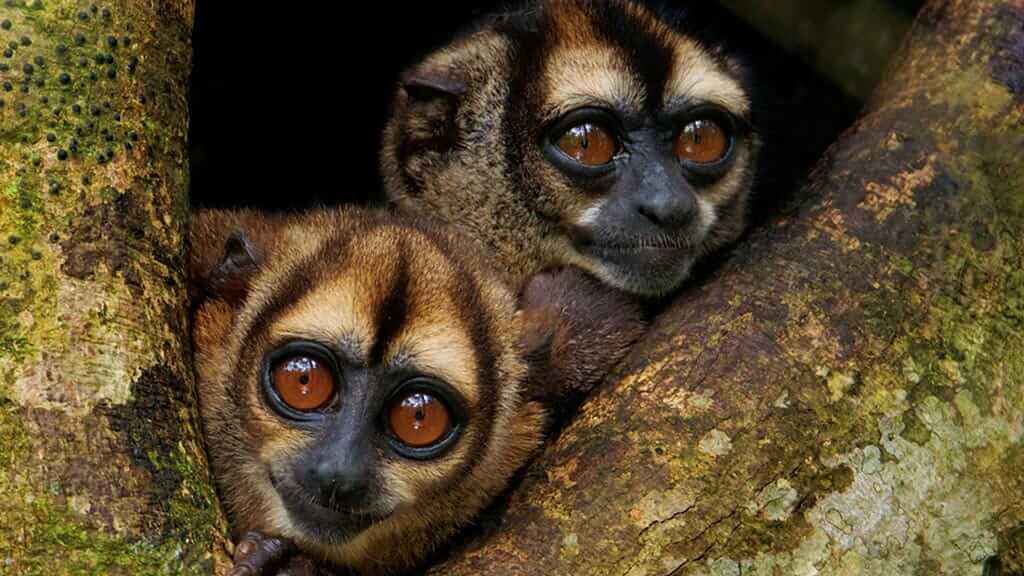
Also referred to as owl monkeys, they have evolved large eyes for effective night vision. This enables them to catch flying night insects, and move through the forest in darkness. Sleeping during the day in hollow tree trunks or other safe hideouts, they spring to life as night falls, and are especially active during full moons.
The most famous Ecuadorian night monkey is the aptly named noisy night monkey. Perhaps not a monkey you want close to your lodge cabin though, for their racket of hooting sounds through the early hours.
8. Titi Monkey
Two Species: Red-crowned Titi (Callicebus Discolor) & Yellow-handed Titi (Callicebus Lucifer)
IUCN show an extensive list of 31 global Titi monkey species, of which two can be found in Ecuador’s Amazon rainforest – the red-crowned and yellow-handed. Fortunately, both are currently registered with a Least Concern conservation status.
Usually spotted in small family groups of monogamous parents and offspring, titis are small in size (from 31-38cm without tail), and eat mostly fruit, leaves and insects.
They defend their territory with loud calls, and male and female are also know to sing together in duos.
9. Napo Saki
Three Species: Napo Saki (Pithecia Napensis), Miller’s Saki (Pithecia Milleri) & Equatroial Saki (Pithecia Aequatorialis)
The Napo Saki is without doubt one of the more unusual Ecuador monkeys that Amazon visitors may encounter. Not only is their physical appearance rather odd, they also demonstrate a dignified and unmonkey-like behavior.
Dark grey in color, with big, furry tail, the Napo Saki boasts long, dense fur which makes them appear larger than they actually are. Males have a black body with short white hairs on their head, and grey face, while females are grey all over.
Napo sakis survive on a diet of fruits, honey, leaves, and small animals such as mice, bats, and birds.
This species is notoriously difficult to observe in the wild, largely because they are solitary and shy creatures. They are also less noisy compared to their more active monkey cousins.
10. Tamarin Monkey
Three Species: Red-mantled saddle-back Tamarin (Leontocebus Lagonotus), Black-mantled Tamarin (Leontocebus Nigricollis) & Golden-mantled Tamarin (Leontocebus Tropartitus)
Our final rainforest monkey of Ecuador is the Tamarin, another small, cute and popular species.
Tamarin’s measure on average 22–24cm in body size. Perhaps their most distinctive feature is pointy, cat-like ears and faces. The golden-mantled Tamarin has been made famous as the emblem logo of Napo Wildlife Center lodge, which is the very best site to see this particular species in Ecuador.
The Tamarin species tend to forage close to the forest floor, eating mostly fruit, nectar and insects. They are also known to steal tree gum from holes made by poor pygmy marmosets.
The golden-mantled tamarin is only found in the Yasuni National Park region, and a small area across the border in Brazil. So, it’s no surprise that the species is considered Near Threatened by IUCN.
So, that pretty much wraps up this post about Ecuador rainforest monkeys. For real monkey die-hards, we’ve also published a shorter blog about Pacific coast Ecuador monkey species.
To plan an unforgettable trip into the Amazon rainforest, CONTACT our team of dedicated travel advisors. As well as the Yasuni lodges and kayak tour already mentioned, there are also other great tour choices available for monkey-spotting. In particular check out Sacha and Sani lodges, both located in deep, pristine jungle. Amazon River cruises also offer great possibilities.
In conclusion, for monkey-lovers, few places on the planet compare to Ecuador. A trip into deep Amazon rainforest is the perfect place for monkey spotting, with 17 different species waiting to cross paths with intrepid tourists. In particular, the protected Yasuni National Park is considered the most bio-diverse place on earth, and is teaming with happy, wild monkeys. A trip to a Yasuni lodge is highly recommended, don’t forget your binoculars and camera for a truly magical experience.

